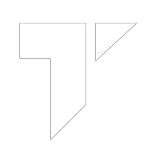The approach to training isn’t about following a one-size-fits-all template—it’s about a finely tuned balance of intensity, technique, and recovery with a touch of science. Here’s an inside look at the insightful structure of a great leg workout regimen.
Warming up
Before the heavy lifting begins, the importance of a dynamic warm-up cannot be stressed enough. Preparing the muscles and joints is as critical as the workout itself. The warm-up routine lasts about 10 to 15 minutes and includes a series of dynamic stretches, mobility drills, and light cardio to elevate the heart rate. Think of it as priming the engine before a long drive. This phase is essential to reduce the risk of injury and ensure that every muscle fiber is ready to take on the challenge ahead. Dont think this as part of the workout, it has to be done anyway.

Heavy compound movements
At the heart of leg day training are the heavy compound exercises that build the foundation of strength. The mainstay is the squat, which is believed to be the ultimate test of lower-body power. Opt for a mix of back squats, front squats, and even pause squats to vary the stimulus of each muscle, each workout. Each set is executed with deliberate precision—focusing on depth, form, and controlled movement rather than just loading up the bar.
After squats, move on to lunges and step-ups. These exercises aren’t just about building muscle; they help improve balance and unilateral strength, ensuring that no leg is left behind. In this phase, three to four sets of each exercise are typically performed, with rep ranges that vary from heavy sets of 6-8 to endurance-focused sets of 12-15. This combination is designed to target both muscle hypertrophy and raw strength.

Sculpting the details
Once the heavy compound lifts are completed, shift the focus to isolation work. Here, the goal is to target specific muscles—especially the quadriceps and hamstrings—with a level of precision that compound exercises can’t match. Leg extensions and hamstring curls are the bread and butter of this phase. By isolating these muscles, we are able to fine-tune the physique and address any imbalances.
Also include some calf raises and hip abductor exercises, ensuring that every component of his lower body is engaged. These moves are performed with strict form and a controlled tempo to maximize muscle activation.
For a deeper dive into isolation techniques and their benefits, Visit our homepage here.
Conditioning and core stability
Planks, side planks, and weighted ab rollouts help reinforce the connection between the core and the legs, creating a seamless transfer of power during heavy lifts.
Recovery and nutrition
Never underestimate the importance of recovery. Equally crucial is the focus on nutrition; proper fuel is essential for muscle repair and growth. a balanced meal rich in proteins, complex carbohydrates, and healthy fats, taken soon after the workout to kickstart the recovery process is very important.
In essence, this leg workout structure is a harmonious blend of preparation, intense work, precise isolation, and dedicated recovery. It’s a regimen that challenges every aspect of the lower body, building not only impressive muscle mass but also strength, endurance, and balance. Whether you’re an aspiring lifter or a seasoned athlete, the principles behind his workout offer valuable lessons in dedication and smart training.

